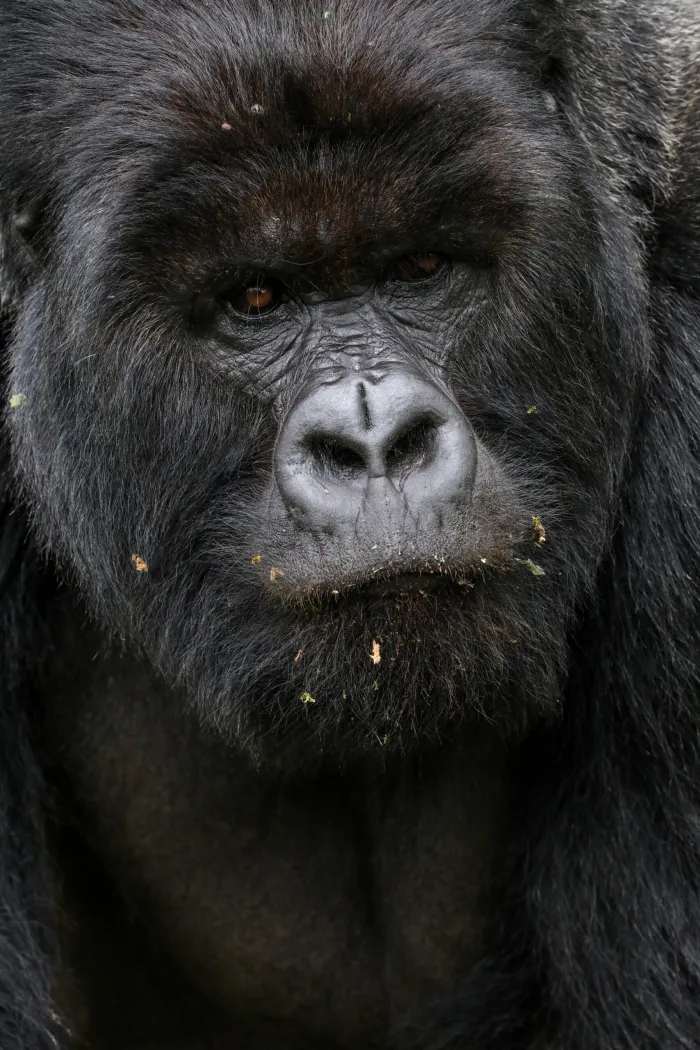
Marambo is one of Rwanda’s largest silverbacks, photographed on the slopes of Sabyinyo, a volcano covered in dense forest. He is the head of Mahoza family and weighs around 200 kg. Mountain gorillas can be difficult to photograph because they are constantly moving in and out undergrowth. The light is always changing and it’s hard to get too close. I wanted to capture up-close photos that would give an idea of what it is like to be eye-to-eye, with one of the most amazing creatures of nature.
“Gorillas have more than 98% of their DNA in common with humans. The gorillas are also essential to the forest habitat, controlling plant growth, and dispersing seeds. Mountain gorillas can only be found in three countries: Rwanda Uganda and Democratic Republic of Congo. The two areas they occupy total less than 300 sq. miles.
“Mountain Gorilla populations are slowly improving. The IUCN has moved them from Critically Endangered status to Endangered. This is a good sign that the global conservation efforts of wildlife organisations, local governments and people are working. “We just need to ensure that there are more.”

The photographer and journalist Graeme Green visited Volcanoes National Park, Rwanda last year to see mountain gorillas. He tells me that being up close with the world’s biggest primate was an experience he will never forget. Green says, “I spent some time with a 200 kilo silverback named Marambo.” Humans and gorillas share 98% DNA. This is evident in Green’s photographs of Marambo which are the New Big 5 a collection of wildlife photography by more than 145 photographers.
The book, and Green’s larger project with the same title, is a reclamation of and reimagining the “Big 5,” an animal term used by trophy hunter to describe animals they wanted to kill and mount to their walls. Green’s ambitious idea was also straightforward: rather than shooting these magnificent creatures with guns, how about focusing our attention on protecting them and raising public awareness through photography?
The photographer organized public voting to determine the “New Big 5”, or the animals that people wanted to photograph. The people chose polar bears and elephants.
Mountain gorillas faced extinction in the 1970s. They were killed as trophies and large areas of their habitat destroyed. The mountain gorillas survived. Green said that mountain gorillas were a conservation success.
The most recent census, conducted in 2018, shows that their number is 1,063. Volcanoes National Park is being expanded to accommodate the increasing numbers.
The world’s animals are in crisis. But the story of the gorilla, and other stories like it, show that we can reverse the trend and ensure a future for both wildlife and humans. The New Big 5 Book, published by Earth Aware Editions, and distributed by Simon & Schuster is about All Wildlife, both large and small. The five species chosen by the public represent a starting point, leading to dozens of species that are revealed along with them.
With essays by pioneering conservationists, activists and photographers and images taken by passionate photographers, the New Big 5 offers a possible roadmap for humanity. It’s a map we must follow if there is to be a future for our Earth and its many inhabitants. Green told us more.
